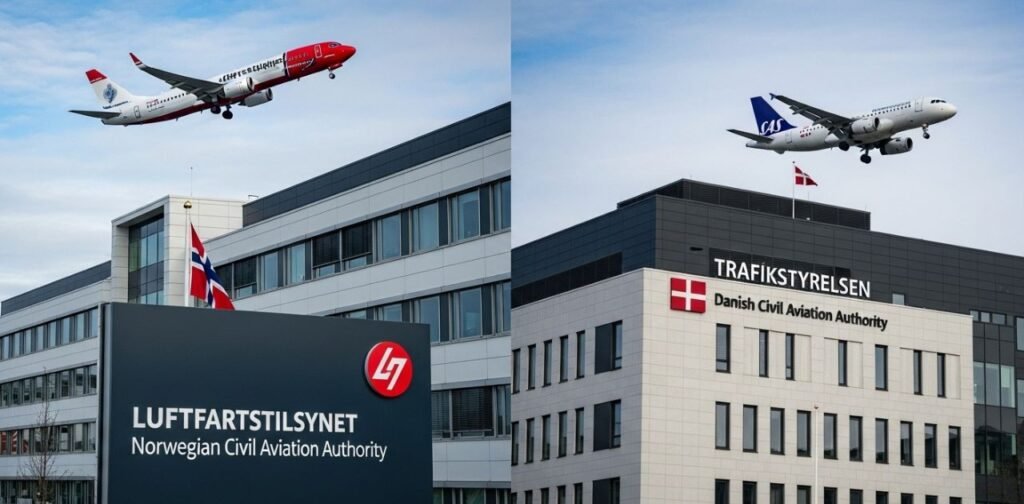Introduction to Statens Luftfartsvæsen
Aviation is one of the most important sectors for any modern country, as it connects people, cultures, and economies. In Denmark, the organization historically responsible for regulating aviation was known as Statens Luftfartsvæsen. Translating to “The Civil Aviation Authority of Denmark,” this institution oversaw the safety, regulation, and management of air traffic across the nation.
Statens Luftfartsvæsen was more than just a regulatory body—it acted as the foundation of Denmark’s aviation system, ensuring that air travel was safe, efficient, and aligned with both European and global standards. It managed not only commercial aviation but also private and military-related airspace coordination when necessary.
The organization played a crucial role in Denmark’s development as a connected nation. With Copenhagen Airport serving as one of the busiest hubs in Northern Europe, the responsibility of ensuring smooth air operations required a trusted authority. That authority was Statens Luftfartsvæsen, which maintained regulations, oversaw airlines, and guaranteed compliance with international aviation standards.
Today, while the functions of the authority have been restructured and integrated into new government bodies, the legacy of Statens Luftfartsvæsen remains important in understanding the history and evolution of Danish aviation governance.
The Role and Responsibilities of Statens Luftfartsvæsen
The primary role of Statens Luftfartsvæsen was to serve as the national aviation authority for Denmark. Its responsibilities were wide-ranging, covering everything from safety regulations to airspace management.
One of the most critical tasks was aviation safety oversight. This meant certifying airlines, inspecting aircraft, and monitoring airports to ensure compliance with international safety standards. Without this oversight, passengers would face higher risks, and Denmark’s aviation reputation could be compromised.
Another key function was licensing and certification. Statens Luftfartsvæsen was responsible for issuing pilot licenses, air traffic controller certifications, and approvals for aviation engineers. By maintaining strict standards, the authority ensured that only qualified professionals were responsible for Denmark’s skies.
The organization also handled air traffic management and regulation of airspace. Coordinating with Eurocontrol and other European agencies, it ensured that Denmark’s airspace was used efficiently and safely, preventing accidents and reducing delays.
Additionally, Statens Luftfartsvæsen worked on environmental regulations in aviation. With Denmark being a leader in sustainability, the authority supported measures to reduce aircraft emissions and noise pollution.
Finally, it played a role in policy development—helping shape Denmark’s aviation strategies in line with the European Union and the International Civil Aviation Organization (ICAO). These policies strengthened Denmark’s position as a hub for safe, modern, and eco-friendly air travel.
History and Evolution of Statens Luftfartsvæsen
The history of Statens Luftfartsvæsen is closely tied to the growth of aviation in Denmark. As air travel became increasingly common in the 20th century, there was a growing need for structured oversight. The Danish government established Statens Luftfartsvæsen as the official civil aviation authority to ensure regulation and safety in this rapidly developing industry.
Throughout the decades, the authority adapted to changes in aviation. With the rise of international air travel, Denmark needed to align with European regulations and global aviation standards. Statens Luftfartsvæsen was instrumental in integrating Danish aviation into the global framework.
In the early 2000s, however, the structure of Denmark’s transport and aviation governance changed. Statens Luftfartsvæsen’s responsibilities were eventually merged into Trafikstyrelsen (the Danish Transport Authority). This reorganization streamlined operations, combining aviation, rail, and road oversight into one central body.
Despite the restructuring, the name Statens Luftfartsvæsen continues to hold historical significance. It represents an era when Denmark built the foundation of its aviation system—developing airports, regulating airlines, and ensuring passenger safety. Today, its legacy lives on in the strong aviation infrastructure Denmark enjoys.
Impact of Statens Luftfartsvæsen on Danish Aviation
The impact of Statens Luftfartsvæsen can be measured by how effectively it shaped Denmark’s aviation industry into what it is today.
One major impact was the development of safe and modern airports. With Copenhagen Airport becoming one of the busiest in Scandinavia, Statens Luftfartsvæsen ensured that infrastructure expanded in compliance with international safety standards.
It also contributed to airline regulation. Danish carriers, including Scandinavian Airlines (SAS), operated under its oversight, which ensured safety, reliability, and competitiveness in the European market.
Furthermore, the authority had a significant impact on environmental sustainability. Long before climate change became a global concern, Statens Luftfartsvæsen worked to minimize aviation’s environmental footprint by supporting noise reduction and emission control measures.
Lastly, its contribution to international cooperation was vital. By collaborating with ICAO, EASA (European Union Aviation Safety Agency), and other organizations, Statens Luftfartsvæsen positioned Denmark as an influential voice in global aviation matters.
Without this institution, Denmark’s aviation sector would not have reached its current status as a reliable, sustainable, and globally connected system.
FAQs About Statens Luftfartsvæsen
Q1: What does Statens Luftfartsvæsen mean?
It translates to “The Civil Aviation Authority of Denmark,” which historically managed Denmark’s aviation regulations and safety.
Q2: Does Statens Luftfartsvæsen still exist today?
Its responsibilities have been transferred to Trafikstyrelsen (Danish Transport Authority), but the name remains important in aviation history.
Q3: What were its main responsibilities?
It managed aviation safety, pilot licensing, airspace regulation, environmental oversight, and airport inspections.
Q4: Why was it replaced by Trafikstyrelsen?
To streamline transport governance by merging aviation, rail, and road oversight into one central authority.
Q5: How did Statens Luftfartsvæsen impact Danish aviation?
It built the foundation of Denmark’s aviation system, regulated airlines, ensured safety, and promoted sustainability.
Conclusion
Statens Luftfartsvæsen was more than just a government body—it was the foundation of Denmark’s modern aviation system. By ensuring passenger safety, regulating airlines, and supporting sustainability, it left a lasting mark on how Denmark connects with the world.
Though its functions have since been absorbed by the Danish Transport Authority, the legacy of Statens Luftfartsvæsen continues to shape aviation policy and infrastructure. It symbolizes Denmark’s commitment to safe, efficient, and environmentally responsible air travel, making it a vital part of both the country’s past and its future.



